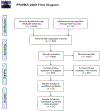Biological aging in childhood and adolescence following experiences of threat and deprivation: A systematic review and meta-analysis
- PMID: 32744840
- PMCID: PMC7484378
- DOI: 10.1037/bul0000270
Biological aging in childhood and adolescence following experiences of threat and deprivation: A systematic review and meta-analysis
Abstract
Life history theory argues that exposure to early life adversity (ELA) accelerates development, although existing evidence for this varies. We present a meta-analysis and systematic review testing the hypothesis that ELA involving threat (e.g., violence exposure) will be associated with accelerated biological aging across multiple metrics, whereas exposure to deprivation (e.g., neglect, institutional rearing) and low-socioeconomic status (SES) will not. We meta-analyze 54 studies (n = 116,010) examining associations of ELA with pubertal timing and cellular aging (telomere length and DNA methylation age), systematically review 25 studies (n = 3,253) examining ELA and neural markers of accelerated development (cortical thickness and amygdala-prefrontal cortex functional connectivity) and evaluate whether associations of ELA with biological aging vary according to the nature of adversity experienced. ELA overall was associated with accelerated pubertal timing (d = -0.10) and cellular aging (d = -0.21), but these associations varied by adversity type. Moderator analysis revealed that ELA characterized by threat was associated with accelerated pubertal development (d = -0.26) and accelerated cellular aging (d = -0.43), but deprivation and SES were unrelated to accelerated development. Systematic review revealed associations between ELA and accelerated cortical thinning, with threat-related ELA consistently associated with thinning in ventromedial prefrontal cortex, and deprivation and SES associated with thinning in frontoparietal, default, and visual networks. There was no consistent association of ELA with amygdala-PFC connectivity. These findings suggest specificity in the types of early environmental experiences associated with accelerated biological aging and highlight the importance of evaluating how accelerated aging contributes to health disparities and whether this process can be mitigated through early intervention. (PsycInfo Database Record (c) 2020 APA, all rights reserved).
Figures





References
-
- Acacio-Claro PJ, Koivusilta LK, Doku DT, & Rimpelä AH (2019). Timing of puberty and reserve capacity in adolescence as pathways to educational level in adulthood - A longitudinal study. Annals of Human Biology, 46, 35–45. - PubMed
-
- Assink M, & Wibbelink CJM (2016). Fitting three-level meta-analytic models in R: A step-by-step tutorial. The Quantitative Methods for Psychology, 12, 154–174. 10.20982/tqmp.123.p154 - DOI
Publication types
MeSH terms
Substances
Grants and funding
LinkOut - more resources
Full Text Sources
Medical
Miscellaneous

